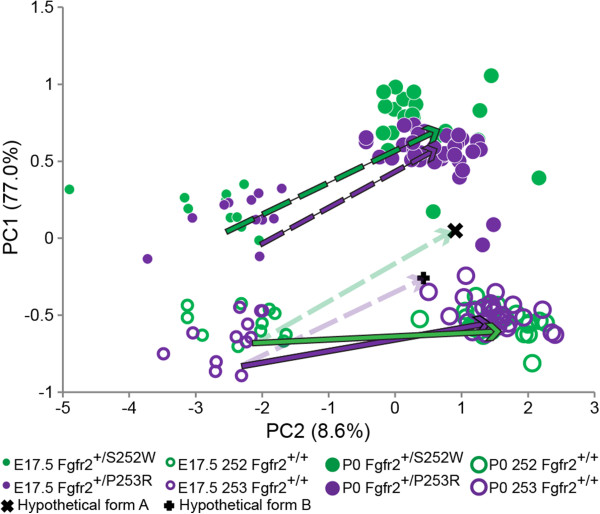Figure 7.

Mouse cranial in the skull form space. Placement of all mouse crania on PC1 and PC2 in the skull form space estimated by PCA of all unique linear distances among 33 cranial landmarks (on all mice including two hypothetical forms) to show the estimated growth trajectory for each sample as vectors. GDMA revealed growth patterns between mutant mice and unaffected littermates to be statistically different (Figure 6; Additional file 7). Group-specific mean vectors begin at the location of the E17.5 group mean form in the skull form space defined by the PCA and end at the location of the P0 group-specific mean form. Hypothetical form A represents the average Fgfr2+/+ (S252W) cranial morphology grown using the Fgfr2+/S252W growth pattern. Hypothetical form B represents the average Fgfr2+/+ (P253R) cranial morphology grown using the Fgfr2+/P253R growth pattern. The growth trajectories for the hypothetical forms (ghosted) begin at the group-specific unaffected E17.5 mean and are equivalent in direction and magnitude to the growth trajectories of the mutant mice, ending at the position of the hypothetical forms (see text).
